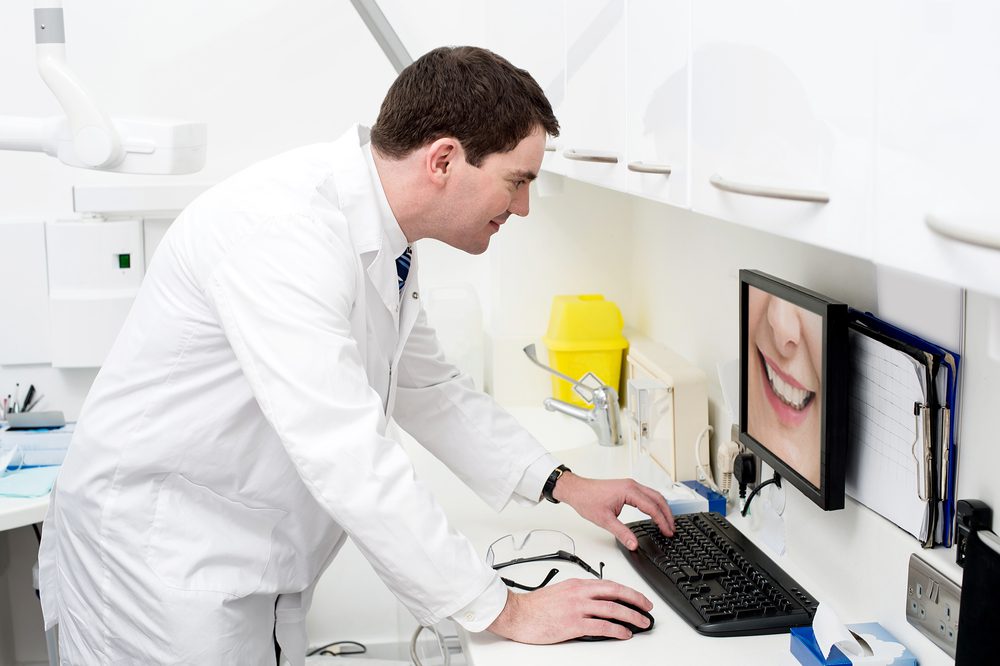
Have you ever wondered how technology is changing the healthcare industry? In particular, how dental professionals are utilizing technology to improve their practice’s efficiency and patient experiences? One area where technology is rapidly advancing is in orthodontic treatment.
Orthodontics is a specialized branch of dentistry that focuses on the diagnosis, prevention, and treatment of dental abnormalities. Over the years, traditional orthodontic treatments have evolved, from metal braces to clear aligners. But recently, the integration of technology in orthodontics has completely transformed the way dental professionals approach treatment planning and execution.
In this article, we’ll explore the role of technology in enhancing orthodontic practice efficiency. We’ll examine how orthodontic practices are incorporating innovative technologies such as 3D imaging, digital models, and virtual planning software to streamline treatment processes, enhance accuracy, and improve patient outcomes.
Orthodontic practices have come a long way since the invention of metal braces. The advent of technology has had a significant impact on orthodontic practices, making treatments faster, more comfortable, and more precise. The benefits of technology in orthodontic practice are:
 Orthodontic treatment has come a long way over the years, and technology has played a critical role in its advancement. The latest technological advancements have revolutionized how orthodontic treatments are carried out, making it easier, quicker, and more comfortable for patients. Here is a look at some of the latest technological advancements in orthodontics.
Orthodontic treatment has come a long way over the years, and technology has played a critical role in its advancement. The latest technological advancements have revolutionized how orthodontic treatments are carried out, making it easier, quicker, and more comfortable for patients. Here is a look at some of the latest technological advancements in orthodontics.
3D printing is shaping the future of orthodontics. With the help of 3D printing, orthodontists can now create customized braces for patients.
The braces are made to precisely conform to the contours of your teeth, making them fit more comfortably, resulting in fewer treatments and a shorter recovery period.
Orthodontic practices are shifting towards digital scans and impressions compared to traditional molds. Digital scanning ensures accuracy and speed in creating dental models. In addition, the process is much more comfortable for patients, eliminating the need for messy materials used in traditional impressions.
This technology has also enhanced communication between orthodontists and dental labs, resulting in more accurate and customized aligners and braces.
Clear aligners are an alternative to traditional braces and have become increasingly popular over the years. They consist of a series of clear, removable trays custom-fitted to your teeth. These trays gradually shift the teeth into their desired position.
The technology that drives clear aligners has improved, and they are now more accurate and comfortable for patients. They also eliminate the need for wires and brackets, which can reduce discomfort and provide better oral hygiene.
Intraoral scanners are devices that capture a 3D image of the mouth’s interior, giving orthodontists detailed images of a patient’s teeth, gums, and surrounding structures. These images allow orthodontists to plan the best course of treatment while considering the patient’s unique facial features, bone structure, and tooth positions, resulting in a more precise diagnosis.
Self-ligating braces allow for faster and more comfortable tooth movement as they use a unique clip rather than elastics to hold the wire in place. Lingual braces are similar to traditional braces but are placed behind your teeth, making them virtually invisible to others.
These advancements in technology offer patients more options for orthodontic treatment, improving the overall patient experience and providing better results.
 Robotic technology is revolutionizing the field of orthodontics. Orthodontists can now use machines or robots to perform certain procedures such as placing brackets or wires with increased precision and accuracy.
Robotic technology is revolutionizing the field of orthodontics. Orthodontists can now use machines or robots to perform certain procedures such as placing brackets or wires with increased precision and accuracy.
This technology reduces treatment time, improves patient outcomes, and makes orthodontic treatment more efficient. With robotic technology, orthodontists can provide faster, more accurate, and comfortable treatment, improving the overall patient experience.
In the near future, we can expect robotic technology to continue advancing and further transform the field of orthodontics.
With the rapid advancements in technology, the field of orthodontics has not been left behind. Two recent advancements in the field include teleorthodontics and virtual consultations.
Teleorthodontics involves the use of technology to remotely treat patients, while virtual consultations facilitate communication between orthodontists and their patients through video conferencing.
The application of these technologies has been especially helpful during the COVID-19 pandemic, as they enable orthodontists to continue providing treatment to their patients without physical contact.
These technological advancements have not only made orthodontic treatment safer but have also improved access to care, enhanced patient engagement, and reduced the time and cost associated with traditional in-person consultations.
In today’s digital age, investing in technology is crucial for any business to stay competitive and relevant. Orthodontic practices are no exception.
By incorporating technology such as 3D imaging, intraoral scanners, and digital appointment systems, orthodontists can streamline their workflows, improve the accuracy of diagnoses and treatment plans, and enhance their patients’ experiences.
Patients today expect convenience, efficiency, and the latest advancements in healthcare technology. Therefore, investing in technology is not only beneficial for the practice but also for the patient’s satisfaction and outcomes.
If you’re looking to enhance your orthodontic practice with technology, consider Smilebliss. From digital imaging and 3D printing to teleorthodontics and virtual consultations, Smilebliss can help you take your practice to the next level.
Investing in technology now can help you stay competitive in the orthodontic industry and provide the best care possible to your patients. Contact Smilebliss today to learn more about how they can help you enhance your practice with technology.